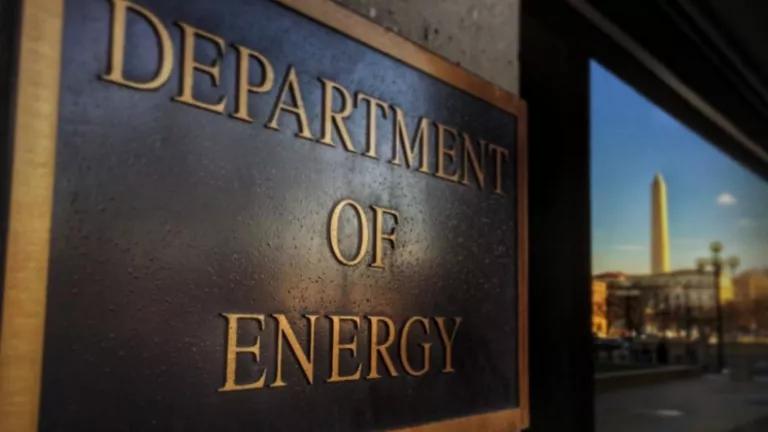DOE Can Make the Future Much More Energy Efficient
The Department of Energy (DOE) plays a great role in supporting energy efficiency throughout the country, through which it has a substantial opportunity to make significant progress on climate action in the next four years.

This post was written by my colleague, Ashley Leung.
NRDC and several partner organizations will be celebrating Energy Efficiency Day on October 6th to uplift energy efficiency as one of the most promising tools for reducing carbon emissions and tackling the climate crisis. Energy efficiency helps to reduce electricity use and lower Americans’ utility bills, which is especially helpful for low-income households and renters who face greater energy burdens. The Department of Energy (DOE) plays a great role in supporting energy efficiency throughout the country, through which it has a substantial opportunity to make significant progress on climate action in the next four years.
The climate crisis demands that we significantly reduce carbon emissions from current levels, and the Biden administration’s Department of Energy can drive immense progress in energy efficiency by leveraging the potential of its Appliance and Equipment Standards Program, which sets baseline energy and water efficiency requirements for dozens of common products that we use every day.
Over the next four years, DOE could update or establish standards for about 50 products–such as water heaters and refrigerators—to offer Americans substantial savings on their utility bills and cut down on climate-warming carbon emissions. According to the Appliance Standards Awareness Project (ASAP) and the American Council for an Energy-Efficient Economy (ACEEE), updates to 47 of those products could save the average household more than $100 annually in lower utility bills by 2030, and nearly $350 annually by 2050. All together, updating these standards could potentially save consumers a cumulative $1.1 trillion dollars by 2050 and reduce carbon emissions through 2050 by 1.5 to 2.9 billion metric tons. That’s equivalent to eliminating the emissions from 13 to 25 coal-fired power plants.
DOE does not regulate the use of products inside the home. Households with older products don't have to prematurely retire them. But when the time comes to replace them, Americans can simply choose from a range of options that will be more efficient thanks to improved standards for new appliances, which will lower electric bills and work just as well as their more energy intensive counterparts. Additionally, everyone can enjoy the subsequent public benefits of lowering emissions–such as reduced local air pollution from fossil fuel power plants or job opportunities in the rapidly growing clean energy sector and related industries.
Policymakers must deploy every viable tool in order to meet the challenge of drastically reducing carbon emissions as we watch the effects of climate change unfold—especially for those most vulnerable to extreme heat and weather events. Energy efficiency, combined with the transition to clean energy, will move us closer to goals such as those set by President Biden earlier this year to reduce 50-52 percent of America’s greenhouse gas emissions by 2030. After all, the cleanest (and cheapest) kilowatt is the one you don’t need to generate. DOE should lead the nation and the world in this effort by establishing strong appliance and equipment standards for these products in the next four years. Learn more about how you can support Energy Efficiency Day 2021 here.




